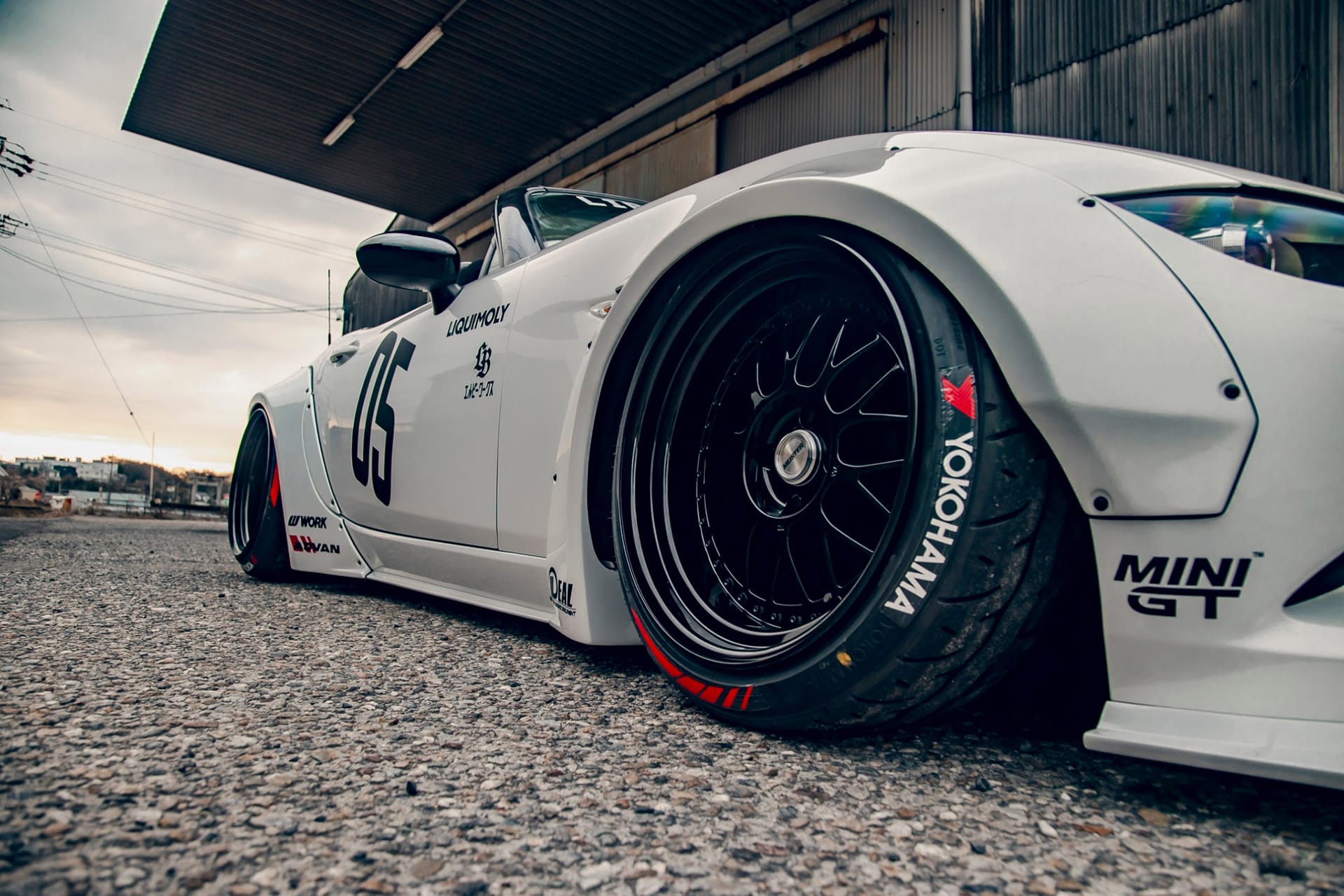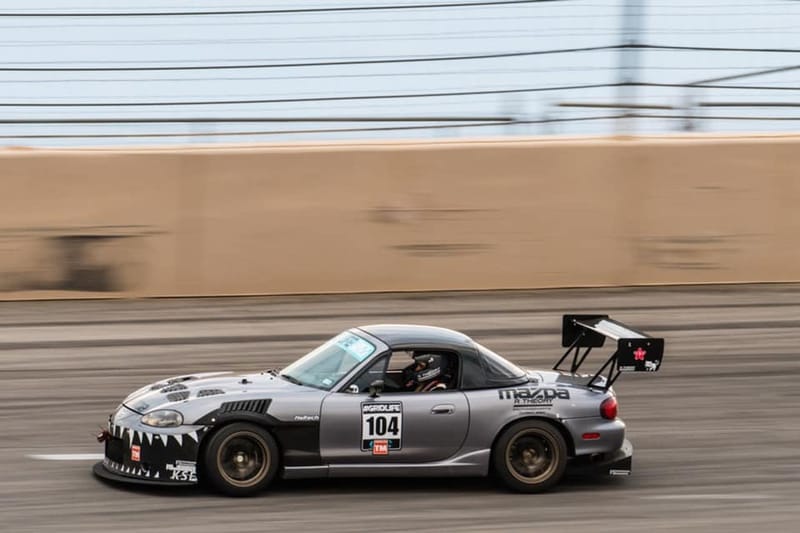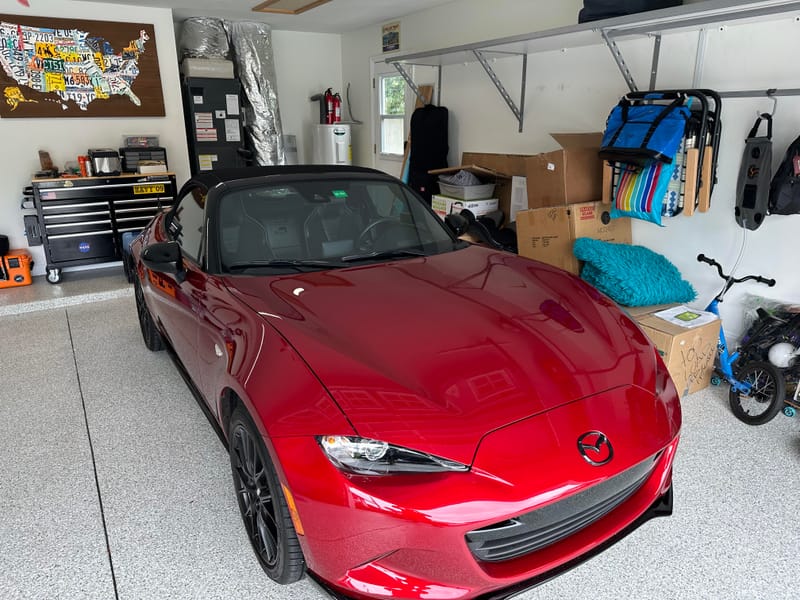Why the ND Miata Is the Best Miata to Modify
Front-mid engine, RWD, near 50/50 balance—and lighter than the NC. ND2 adds power and revs, while Spec MX-5 racing has already proven the best setups. The result: less mass to move, more tuning headroom, and a deep, competition-tested parts catalog.

Front-mid engine, rear-drive, and a near-perfect 50/50 balance, but it starts lighter than the NC, steps up power and revs in ND2 trim, and benefits from a full spec-series racing program that has shaken out what works. In practice, that means less mass to move, more tuning headroom, and a deep catalog of parts and setups already proven in competition.
Lighter, Tighter, Newer
From launch, a manual-trans ND arrived around the low-2,300-pound range, roughly 150 pounds lighter than an equivalent NC despite gains in safety and refinement. That is free performance before you touch a wrench. Underneath, the car uses double wishbones up front and a multi-link rear, geometry that maintains camber in roll and responds beautifully to coilovers and alignment changes. It’s the kind of chassis that rewards careful setup without making daily driving a chore.

ND1 vs ND2
The ND1 (2016–2018) carries a 2.0-liter rated around 155 hp and wakes up dramatically with a quality header and proper ECU calibration. Community dynos routinely show healthy wheel-horsepower gains along with a stronger midrange. The ND2 (2019+) is the factory cheat code: 181 hp, a 7,500-rpm redline, lighter internals, and breathing tweaks. The extra rev ceiling makes gear choice easier on track and gives tuners more room to shape a broad, usable powerband. If budget allows, ND2 is the path of least resistance; if you score a clean ND1, a header and tune close the gap quickly.
The Global MX-5 Cup
The Global MX-5 Cup car starts life as a stock ND and receives hundreds of motorsport parts that address safety, suspension, cooling, and brakes while keeping the engine sealed for parity. Because the series logs huge race mileage, it creates a durability roadmap you can borrow: brake thermal solutions that hold up, spring and bar ranges that balance grip with tire life, alignment windows that don’t chew edges, and cooling priorities that keep temps in check. Many of those lessons trickle down into street-friendly kits, which reduces guesswork for your build.

Paths That Actually Deliver
Most of the naturally aspirated gains on the ND come from the exhaust manifold and the calibration that supports it. A quality header paired with a thoughtful tune is the single biggest step for ND1 cars and still meaningful for ND2 refinement. Intakes and cat-backs add response and sound but won’t match the upstream change in peak numbers. Modern ECU access is mature, with robust logging, map switching, and even flex-fuel or boost control for those who eventually go forced induction. If you want more than NA power, both supercharger and turbo packages exist with clear guidance on fueling, cooling, and calibration.
Where the ND Shines Hardest
The ND rewards sane ride height, appropriate spring rates, and honest bumpstop tuning. Start with coilovers that target street-touring to Cup-inspired rates, then add a sensible alignment that puts real negative camber where the tires need it and a touch of rake to stabilize balance. Braking is straightforward thanks to factory uprates on certain trims and a well-proven big-brake path when you add heat with stickier tires or track sessions. For wheels and tires, the car comfortably supports square setups; an aggressive baseline like 17×9 with 225–235 section rubber is common, provided you verify offset and clearances.

Reliability Under Load
Years of spec-series racing have demonstrated that the 2.0-liter Skyactiv-G tolerates repeated high-temperature, high-RPM use when cooling, fluids, and consumables are handled correctly. That “pre-validation” is a real advantage over older platforms that often need refurbishing or bespoke solutions. Add in the depth of the aftermarket, bushings, arms, braces, aero, driveline pieces, and you can assemble a coherent package quickly, with better resale value because buyers recognize proven parts and recipes.
Street-First Daily Build
Begin with light 16- or 17-inch wheels on quality 200–300-treadwear tires and choose mild coilovers or springs with matched dampers. Add a front bar with proper endlinks, upgrade pads and fluid with stainless lines, and consider the factory or Brembo brake upgrades if you’ll do occasional track days. On ND1, a catted header and tune transform the car; on ND2, focus on calibration refinements and drivability. Finish with an alignment that uses modest negative camber, neutral toe, and a gentle rake. The result is a sharper, faster ND that still commutes comfortably.
Track-First HPDE/Time-Attack Baseline
Select coilovers in the Cup neighborhood of rates, set bumpstops for your ride height, and run track-rated pads and rotors with high-temp fluid. Add simple brake ducting if your temps demand it. Use 17×9 wheels with 225–235 R-compounds and verify clearances and fender work as needed. ND1 benefits most from a header and tune, while ND2 appreciates careful logging for oil and water temps and fuel trims. Keep a maintenance rhythm of torque checks, fresh fluids, wheel-bearing attention, and heat-cycle management. This mirrors what has worked across thousands of track days and multiple full seasons of racing.
ND vs NA/NB/NC in Today’s Market
NA and NB cars are wonderfully analog, but age is catching up; matching ND reliability and pace usually requires bushings, dampers, cooling refreshes, and sometimes engine work. The NC is capable and budget-friendly but heavier, so you often spend more to recapture that “light on its feet” feel. The ND starts lighter, adds modern safety and electronics, enjoys excellent ECU support, and in ND2 form delivers power and revs right out of the box. With the Cup ecosystem guiding your choices, it’s the most efficient way to build a quick, reliable Miata right now.
Buyer Checklist for Would-Be Modders
If you can, start with an ND2; if you find a clean ND1, plan for a header and tune to bridge the performance gap. If track days are in your future, prioritize brakes and heat management before chasing lap time elsewhere. Verify wheel and tire fitment, especially aggressive 17×9 setups, before buying, and plan around your region’s emissions or particulate rules if you intend to change the header or calibration. Use Cup setup documents as a sensible starting box, then tune to your tire choice, your local tracks, and your tolerance for noise and harshness.




